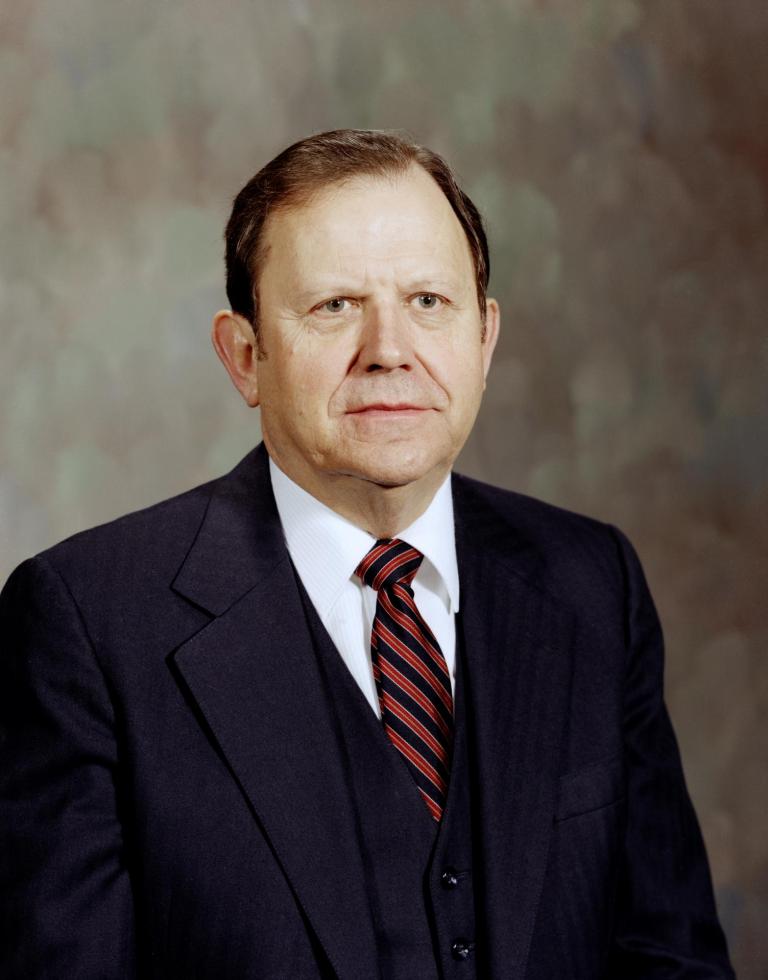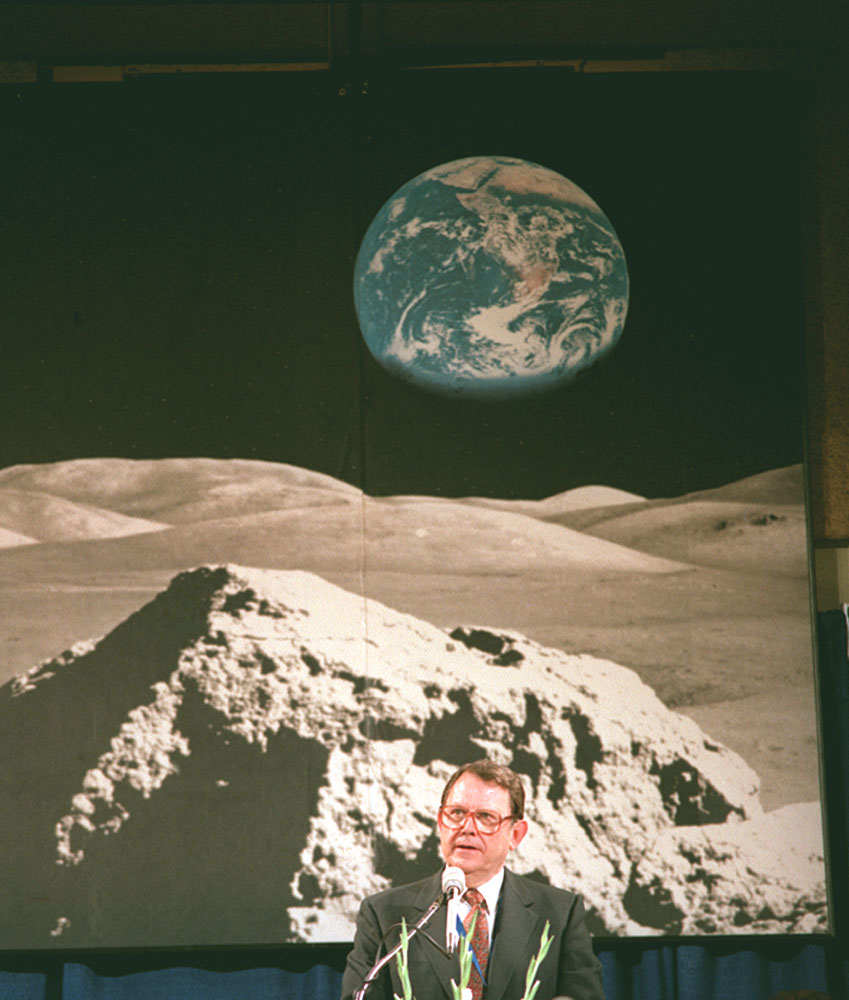
William R. Lucas
Former Center Director at Marshall Space Flight Center (1974–1986)
Dr. William R. Lucas’ career extended from the earliest days of the U.S. rocket program, all the way through the foundation of the Space Station.
Lucas moved to Huntsville, Ala. in 1952 to join the Redstone Arsenal team of rocket pioneers headed by Dr. Wernher von Braun. At Redstone he became a staff member of the Guided Missile Development Division. A specialist in materials, he eventually became chief of that organization’s Materials Branch. On February 1, 1956, Lucas was transferred to the Development Operations Division of the Army Ballistic Missile Agency.
He was responsible for designing the passive thermal control system for the free world’s first satellite, Explorer I, which was launched by a Huntsville team using a Jupiter rocket in 1958. And, he selected the materials used in the Red stone, the rocket that would carry the nation’s first astronaut, Alan Shepard, into space in 1961.

On July 1, 1960, when the development division became the nucleus of the Marshall Center, Lucas transferred to the new organization. For most of the decade of the ’60s, while working on the Saturn family of rockets, he served in progressively responsible management positions within the Center’s Propulsion and Vehicle Engineering Laboratory, becoming laboratory director in 1966.
In these positions, he directed the critical selection of major materials and welding techniques for future launch vehicles. He pioneered work with sp ray-on foams for cryogenic insulation and high-temperature materials. And, he led the development of the world’s largest propulsion system used in the Saturn V launch vehicle.
Lucas was also involved in the design and development of the world’s first space station, Skylab. Under his direction, one of the upper stages of the Saturn V was transformed into a laboratory and living area where three astronaut crews would eventually spend a total of six months probing the unknowns of long-duration space flight and conducting numerous other scientific experiments.
In 1969, four years prior to the actual launch of Skylab, Lucas was named by Wernher von Braun to direct a new organization designed to look to the future. Serving in that key position, then later as deputy director of the Center, and finally from 1974 as Center director, Lucas was instrumental in bringing to Marshall a significant share of the nation’s major space programs.
Under Lucas’ direction, Marshall was given responsibility for managing three of the four main Shuttle elements-the main engines on the orbiter, the twin solid rocket boosters and the huge external tank. In addition, the Marshall Center was given responsibility for Spacelab, an international laboratory carried in the Shuttle where career scientists could travel into space to acquire new knowledge about the sun, the stars, the Earth and life itself. The Center also assumed responsibility for managing Spacelab missions on orbit.
Under Lucas’ guidance, the Marshall Center has also led a NASA/industry team in the development of the Hubble Space Telescope.
Dr. William R. Lucas’ career extended from the earliest days of the U.S. rocket program, all the way through the foundation of the Space Station.
Lucas moved to Huntsville, Ala. in 1952 to join the Redstone Arsenal team of rocket pioneers headed by Dr. Wernher von Braun. At Redstone he became a staff member of the Guided Missile Development Division. A specialist in materials, he eventually became chief of that organization’s Materials Branch. On February 1, 1956, Lucas was transferred to the Development Operations Division of the Army Ballistic Missile Agency.
He was responsible for designing the passive thermal control system for the free world’s first satellite, Explorer I, which was launched by a Huntsville team using a Jupiter rocket in 1958. And, he selected the materials used in the Red stone, the rocket that would carry the nation’s first astronaut, Alan Shepard, into space in 1961.
On July 1, 1960, when the development division became the nucleus of the Marshall Center, Lucas transferred to the new organization. For most of the decade of the ’60s, while working on the Saturn family of rockets, he served in progressively responsible management positions within the Center’s Propulsion and Vehicle Engineering Laboratory, becoming laboratory director in 1966.
In these positions, he directed the critical selection of major materials and welding techniques for future launch vehicles. He pioneered work with sp ray-on foams for cryogenic insulation and high-temperature materials. And, he led the development of the world’s largest propulsion system used in the Saturn V launch vehicle.
Lucas was also involved in the design and development of the world’s first space station, Skylab. Under his direction, one of the upper stages of the Saturn V was transformed into a laboratory and living area where three astronaut crews would eventually spend a total of six months probing the unknowns of long-duration space flight and conducting numerous other scientific experiments.
In 1969, four years prior to the actual launch of Skylab, Lucas was named by Wernher von Braun to direct a new organization designed to look to the future. Serving in that key position, then later as deputy director of the Center, and finally from 1974 as Center director, Lucas was instrumental in bringing to Marshall a significant share of the nation’s major space programs.

Under Lucas’ direction, Marshall was given responsibility for managing three of the four main Shuttle elements-the main engines on the orbiter, the twin solid rocket boosters and the huge external tank. In addition, the Marshall Center was given responsibility for Spacelab, an international laboratory carried in the Shuttle where career scientists could travel into space to acquire new knowledge about the sun, the stars, the Earth and life itself. The Center also assumed responsibility for managing Spacelab missions on orbit.
Under Lucas’ guidance, the Marshall Center has also led a NASA/industry team in the development of the Hubble Space Telescope.























